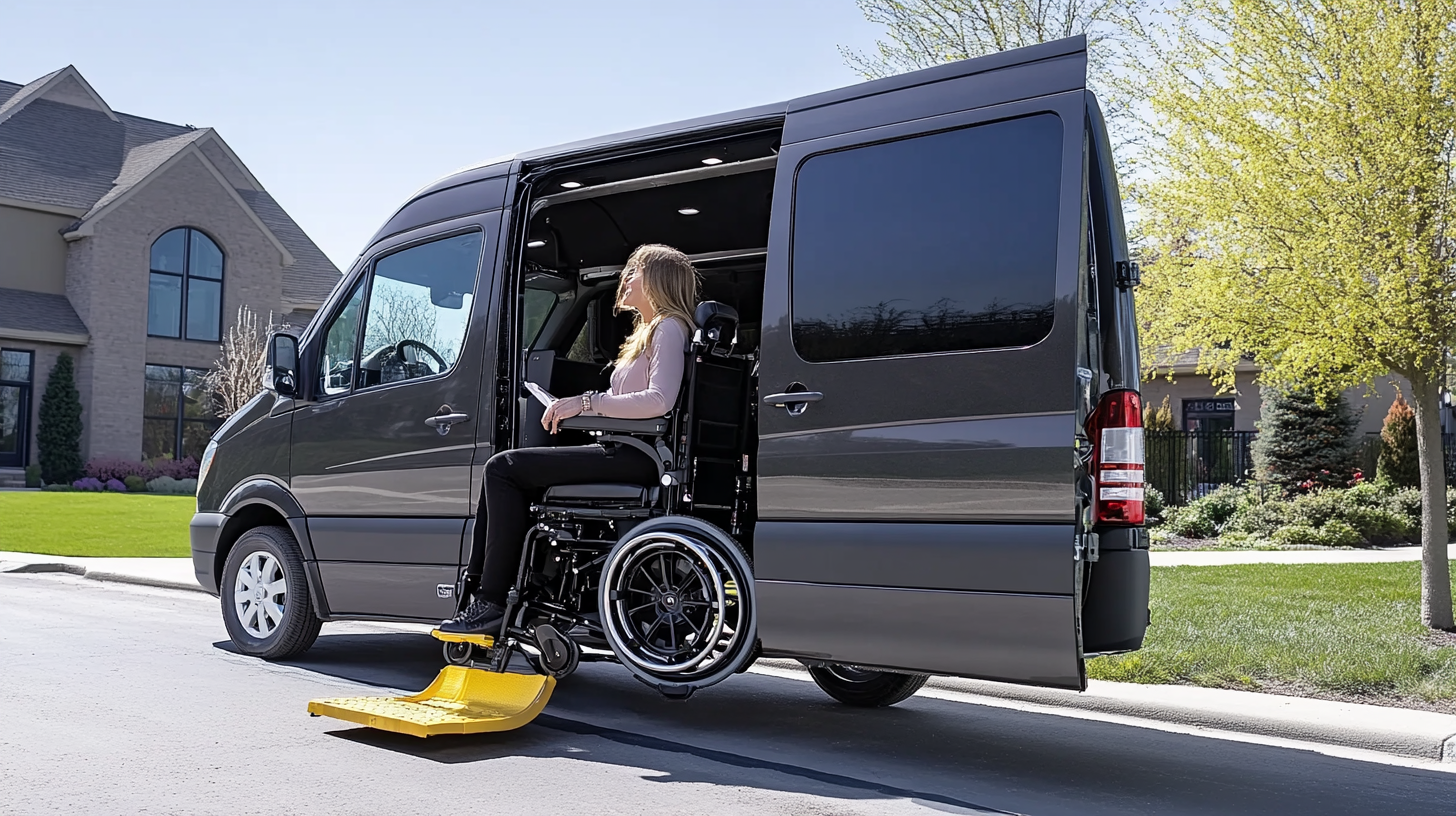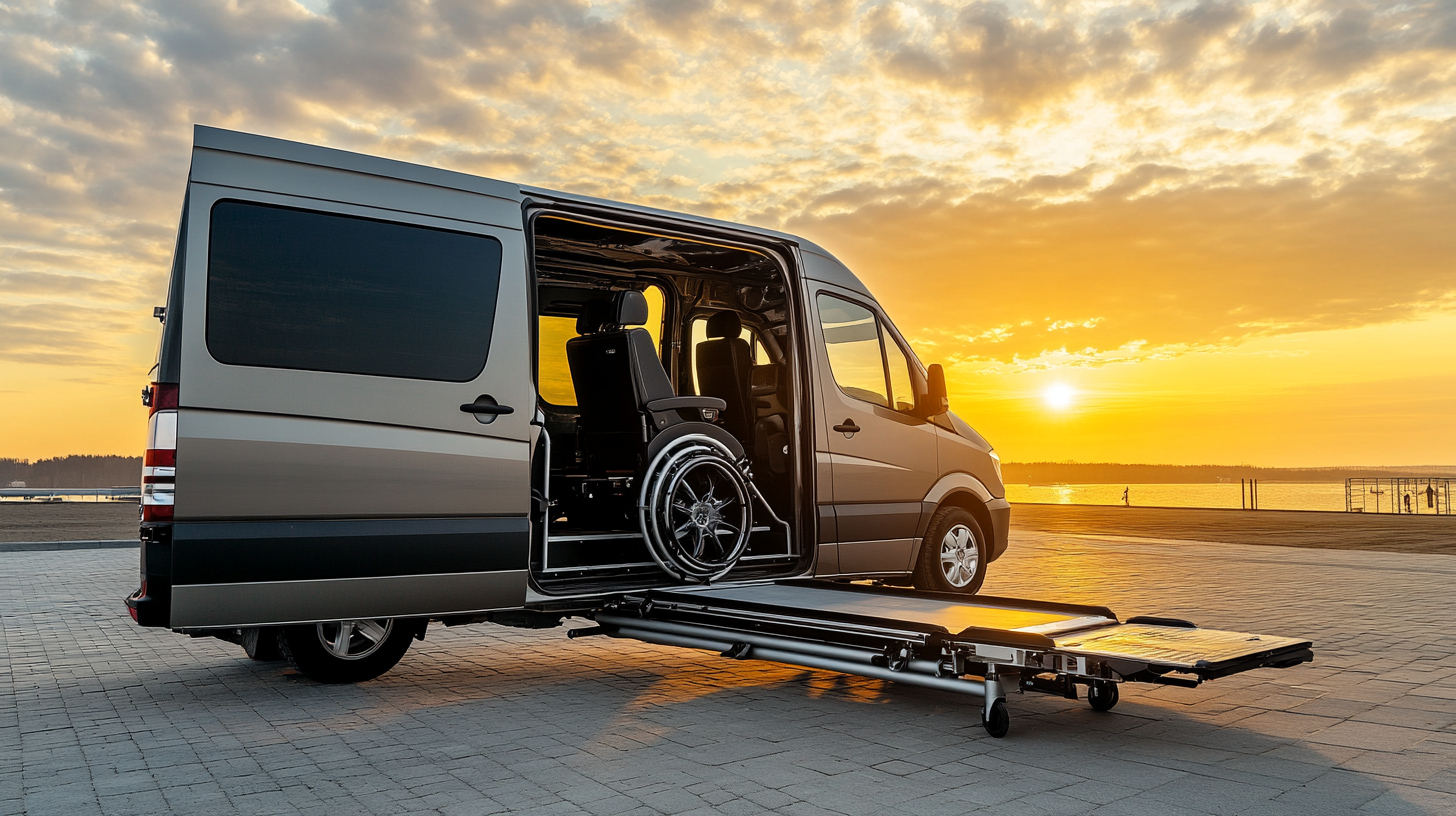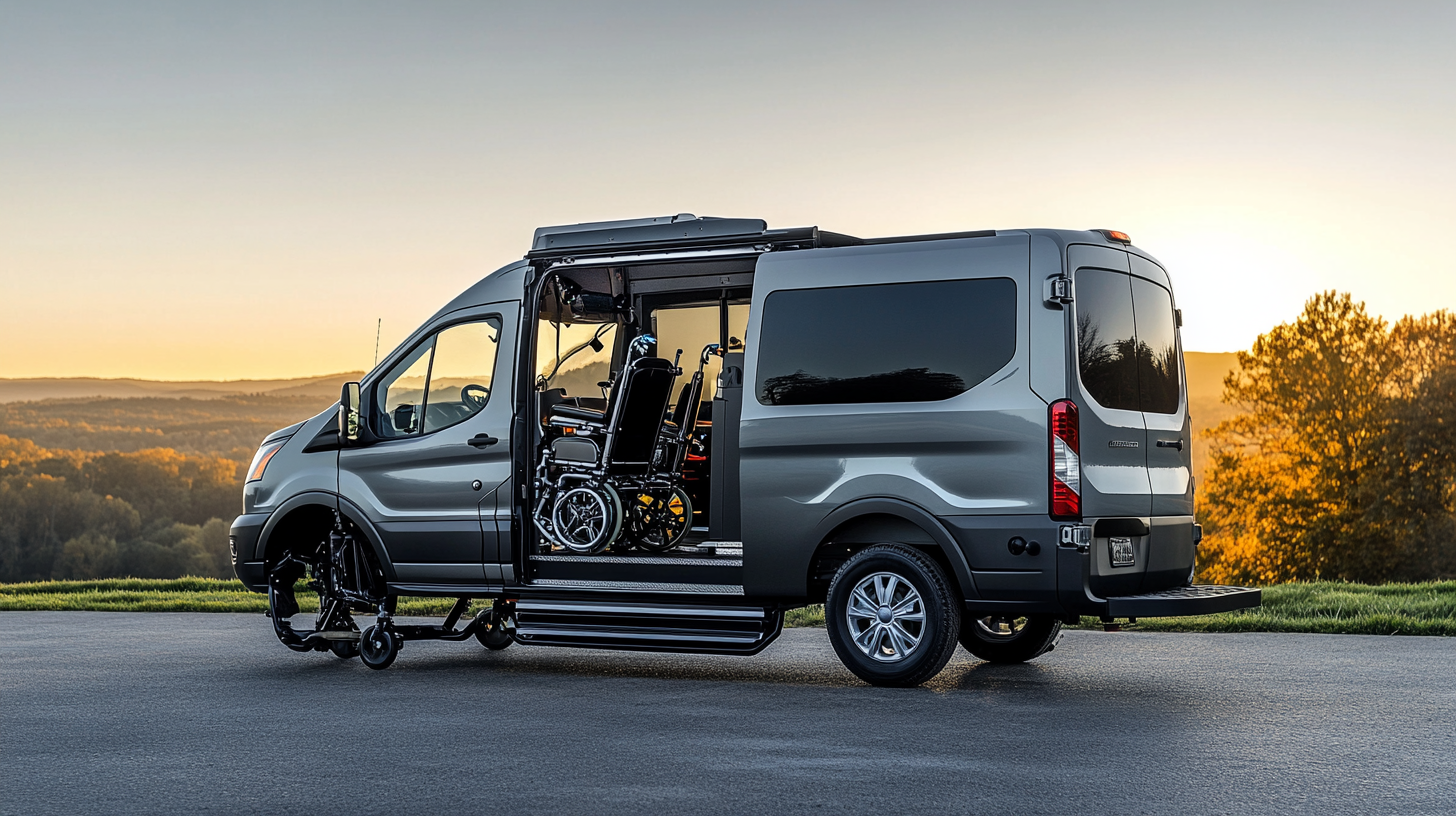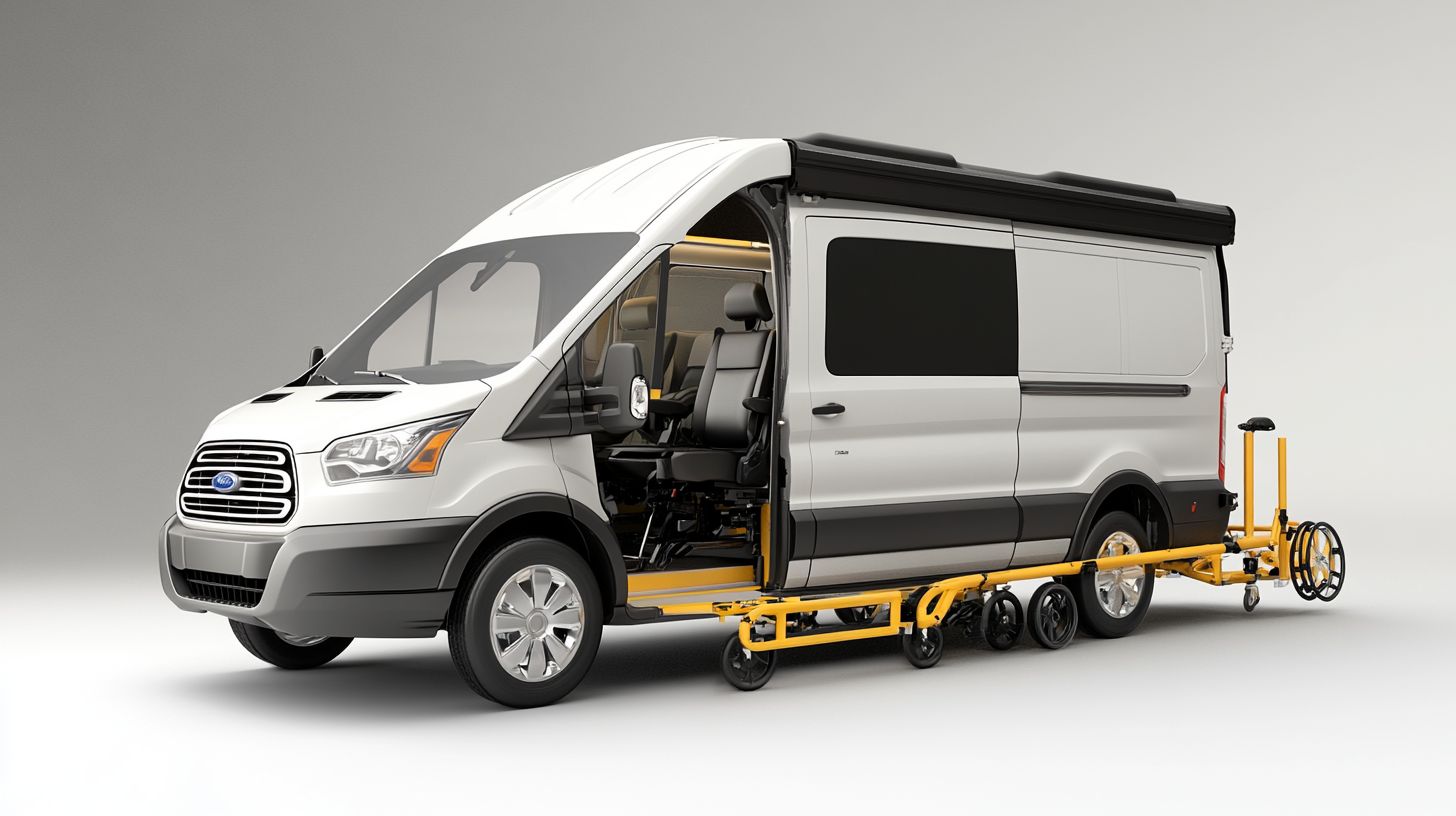Wheelchair Vans Market Insights for 2025 and Top 5 Tips for Global Buyers
The wheelchair vans market is fueled by the aging population and technological advances that are encouraging increased mobility. The latest report from Grand View Research on the global market for wheelchair vans puts its market value at over $1.5 billion in 2022 and is expected to grow more than 6% (CAGR) in the period from 2023 to 2025. The increase is probably based on disability awareness campaigns and transportation needs for people with disabilities, spurring both manufacturers and buyers to search for vehicles designed to travel with mobility restrictions.
Consequently, global buyers should be aware of the rising innovations regarding wheelchair vans. Industry trends develop quickly due to a number of factors-from improved safety features to smart technology-with the increasing demands of different users. This blog will offer not only all the market dynamics expected in 2025 but also good tips for effective navigation in the narrow sector of special-purpose vehicles. These developments will be important for knowing what decisions to make according to personal preferences and needs for wheelchair vans when it comes to purchasing.

Current Trends in the Wheelchair Vans Market for 2025
The wheelchair van industry is undergoing monumental changes as technology advances and consumer needs shift in the run-up to 2025. Allied Market Research has published a report claiming that the global wheelchair van market value is expected to reach nearly $5.35 billion by 2025, growing at a CAGR of around 7.5% from 2020 onward. The results of this growth show increased knowledge of requirements for accessibility, along with a growing number of people with disabilities who need mobility solutions.
Recent trends show that users want smart technology incorporated as an additional feature to wheelchair vans and improve their functionality and user experience. Automated ramp controls, accessibility-friendly GPS navigation, and mobile app integration are now standard in new wheelchair van builds. The market is also now seeing a transition to electric and hybrid wheelchair vans; a situation which can be seen as belonging to a wider automotive initiative to reduce emissions and enhance sustainability. The report from Market Research Future notes that eco-friendly vehicles are projected to be the first preference of the market; predictions for electric wheelchair vans suggest their major market share by 2025.
The demographic shifts that indicate an aging global population are likely to further increase the demand for wheelchair vans. According to the U.S. Census Bureau, by 2030, all baby boomers will be over 65; this means that approximately 1 in 5 residents in the U.S. will be of retirement age. This demographic change further stresses the need for increased mobility solutions-hence, more stimulus for the wheelchair van market as the manufacturers strive to cater to the changing needs of elderly users.

Key Factors Influencing Wheelchair Van Purchases Globally
It affects many factors that shape the decisions of the buyers as well as the buying behavior in a broad view. The recognition of such factors is among the critical ideas that a buyer should understand when making a decision on auspicious purchasing in 2025 and beyond.
Awareness concerning accessibility and inclusivity is on the rise. The demand for wheelchair accessible vehicles is increasing because more countries are scraping public and private sectors to provide access to individuals with disabilities. Buyers are considering that the vehicle is complying with such standards, making a more inclusive society while adhering to legal profiles.
Additionally, these advancements in technologies have been able to provide a selling edge to manufacturers and dealers to persuade the average buyer. More accessibility and safety equipment have increased the appeal of wheelchair vans, including the likes of automatic ramps. For many buyers, they tend to go for practical options that not only serve their purpose but also better driving for user and caregiver. As the world moves towards more technology-savvy consumers, their inclination tends to shift toward those features that add usability-convenience.
Finally, it affects purchase behaviors through the financing features and government backing. Grants, tax holidays, and flexible loans could ease the burden of purchasing a wheelchair van. Buyers who are educated about these will better invest in vehicles meeting their mobility requirements yet took advantage of such resource-influencing purchases.

Top 5 Features to Look for in Wheelchair Vans
When you are in the market for wheelchair vans, it is essential to know the important features that must ensure the comfort and accessibility of the design. The ramp type is a very major consideration. There are manual and automatic ramps, and based on the budget and ease of use, you should decide on which one to go for. Automatic ramps are more suited for the additional convenience of people with limited mobility, whereas manual ramps might be better for cost-savings.
Another major aspect to consider is the interior space. The wheelchair van should have enough room for the wheelchair user and any accompanying passengers. So look for adjustable seating configurations that would accommodate varied needs with ample headroom and legroom in the van to keep any trips comfortable.
Safety features are very important too. The wheelchair van should have secure tie-down systems to hold the wheelchair in place even during transit. Another factor would include vehicles that feature advanced driver-assistance systems that boost the overall safety of the vehicle, including lane-keeping assist, and rear-view cameras.
Lastly, consider the maintenance and support for the wheelchair van. Choosing models from manufacturers known for their reliability and after-sale service can save you time and cost in the long run. With a priority placed on these factors, you will land a wheelchair van that fits your needs and makes for a comfortable ride.

Financial Considerations for Buyers in the Wheelchair Van Market
Walking through the wheelchair van marketplace, the potential buyer will have to be concerned about several monetary issues that can become actively involved in purchasing power. A preliminary enormous consideration is the complete cost of ownership, which includes not just the purchase price but also continued expenditure for insurance, maintenance, and fuel consumption. Buyers can openly set out their budgets with these considerations and thereby minimize any likely financial surprises in the future.
Another vital monetary consideration is initiating knowledge of financing for wheelchair vans. Many dealerships may have financing arrangements for wheelchair vans specifically geared toward the disabled population. This helps ease the financial burdens of the purchase. Buyers should become aware of available government grants and programs to help pay for adaptive vehicles for those who really need them. These resources may help ease the financial burden and give buyers more flexibility in choosing the right vehicle.
The resale value of the wheelchair van is paramount. Some models may hold their values better than others; hence this could be an important factor when deciding to upgrade or change vehicles at some later point in time. Keeping abreast of market trends and talking to fellow buyers can give you an idea of how long a van can hold its value. Taking these financial considerations into account helps the buyer make the best decision for his needs and budget in the wheelchair van marketplace.
Navigating Warranty and Support Options for Wheelchair Vans
With respect to keeping long-term satisfaction and reliability in mind, it can be noted that warranty and support options are an important consideration when purchasing a wheelchair van. The latest Transparency Market Research study states that the worldwide wheelchair-accessible vehicle market is expected to flourish with estimates reaching $10 billion by the year 2025. This trend emphasizes the need for making informed choices with respect to service and warranties concerning these specialized vehicles.
One aspect requires consideration: warranty coverage extended by manufacturers. Most wheelchair van companies offer substantial warranties for the vehicle and conversion components, varying significantly from one company to another with respect to time duration and scope. Major players in the industry like BraunAbility provide three years of warranty for their conversion and lift electronics for five years. Carefully reviewing these terms will ensure that buyers are covered for potential defect or malfunction of the wheelchair van they've purchased.
Another essential aspect that goes along with warranty coverage is continued support for keeping the wheelchair vans functional and safe. Periodic maintenance and availability of customer support services can greatly improve the ownership experience. There are reports that vehicles with easy access to certified service centers can increase lifespan by 30 percent in comparison to those without. So when purchasing a wheelchair van, customers should look into manufacturers that furnish adequate customer support and a clearly outlined maintenance plan so that they can best manage any future concerns.